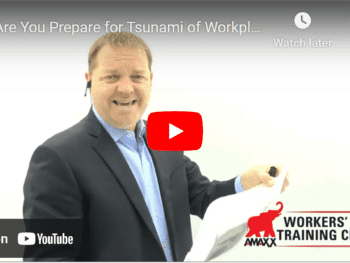There has been a lot of industry talk about the risk of an aging workforce and how this can affect your workers compensation program. A main risk is how ergonomics plays into injury prevention, not only for an aging worker but for all workers.
Here are several ergonomic issues, and ways to try to trim your exposure:
Why should employers be concerned about this issue?
I recently read in the paper where it is projected that 50% of workers expect to work into their 70s, some into their 80s, and some plan to never retire! The reasons for such a statement would vary per the individual needs of the person, so it is hard to say exactly why this phenomenon is occurring.
Truly there are a number of different factors all combined into why this is happening, I do not think it is solely due to financial needs, or solely due to people just liking to work and be out of the house, on so on. The reality is that it seems there are older workers out there who just are not removing themselves from the workforce. Whether or not this will change in the future is unknown, but the current trend is that workers are not in a hurry to retire.
What are the risk factors?
Ergonomics are intended to maximize worker productivity while minimizing fatigue and discomfort. When work stations are designed based on production demand and not on the human element, the result will be increased injury. Worker injury exposure should look at the overall ability of the worker performing the job. It could loosely be said that a 75 year old worker cannot perform as quick nor have the physical stamina of a 25 year old worker. But, you have to take into account worker experience, motivation to perform at a high capacity, overall occupational education, and so on. This would be the human factor of a particular job. Job station risks would include repetitive motion, awkward postures such as bending/stooping and overreaching for items are all ergonomic workstation factors.
When a worker is manually handling heavy objects, it forces the body to comply and this can cause injury. An aging workforce most likely cannot continue to meet strict production demands that stress the body at a high capacity without experiencing injury at some point.
How can I reduce the risk?
The best thing for employers to do is to contact ergonomists and/or risk control professionals for their expertise on how to control and reduce the risk of ergonomically related claims. Many insurance carriers have adequately trained risk professionals that can help, or they can refer you to an outside vendor for further expertise.
Employers can also start to look at work duties and tasks for all of their employees. They should bear in mind necessary accommodations for an aging worker in a high demand, fast-paced work station.
Employers can also use loss run data to look for injury trends in order to pinpoint a particular task that could be increasing injury risk. As well as accommodate the needs of older workers by providing increased breaks, job rotations, sitting options, etc.
Any other ideas that will help out?
Depending on the work demand, a key topic that is having proper footwear and using correct body mechanics when handling materials.
Workplace footwear should be slip-resistant and designed for standing on concrete or other hard surfaces for long periods of time within the work environment. Anti-fatigue mats used with the correct footwear reduces pain and fatigue to the back and lower extremities, thereby reducing some injury exposure.
Establishing proper body mechanics defined by job description help not only an aging workforce, but all employees, on how to properly handle materials with minimal impact to the vulnerable areas of the body.
Summary
The increased presence of an aging workforce presents new exposure to an employer that was not as prevalent in the past. It is important to be proactive, and to become involved in the injury exposure in order to reduce your risk. Talk with your vendors or your carrier about what options you have for reducing your exposure.
Author Rebecca Shafer, JD, President of Amaxx Risk Solutions, Inc. is a national expert in the field of workers compensation. She is a writer, speaker, and publisher. Her expertise is working with employers to reduce workers compensation costs, and her clients include airlines, healthcare, printing/publishing, pharmaceuticals, retail, hospitality, and manufacturing. She is the author of the #1 selling book on cost containment, Workers Compensation Management Program: Reduce Costs 20% to 50%. Contact:RShafer@ReduceYourWorkersComp.com.
Editor Michael B. Stack, CPA, Director of Operations, Amaxx Risk Solutions, Inc. is an expert in employer communication systems and part of the Amaxx team helping companies reduce their workers compensation costs by 20% to 50%. He is a writer, speaker, and website publisher. www.reduceyourworkerscomp.com. Contact: mstack@reduceyourworkerscomp.com.
©2013 Amaxx Risk Solutions, Inc. All rights reserved under International Copyright Law.










